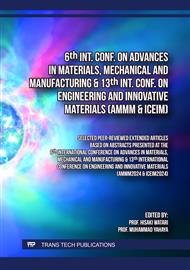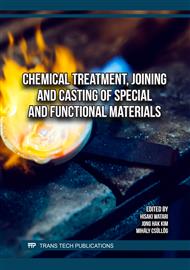p.45
p.57
p.77
p.83
p.89
p.95
p.105
p.117
p.123
Effect of Sintering Conditions on Properties of Assisted Pressure Sintered Tungsten Materials
Abstract:
This study investigates the mechanical properties and microstructure of sintered tungsten under varying sintering conditions. Bending strength tests revealed that sintering at 1400 °C resulted in low flexural strength due to inadequate temperature, whereas sintered tungsten at 1500 °C exhibited improved strength attributed to grain growth. However, temperatures exceeding 1600 °C led to excessive grain growth and a subsequent decline in strength, indicative of grain coarsening and potential localized bonding. Additionally, analysis of holding times at 1500 °C demonstrated that extended durations promoted neck bonding between grains, contributing to the formation of interconnected grains and enhanced mechanical properties. This study underscores the importance of optimizing sintering parameters to control grain growth and achieve desired mechanical properties in sintered tungsten materials.
Info:
Periodical:
Pages:
89-94
Citation:
Online since:
June 2025
Authors:
Price:
Сopyright:
© 2025 Trans Tech Publications Ltd. All Rights Reserved
Share:
Citation:



